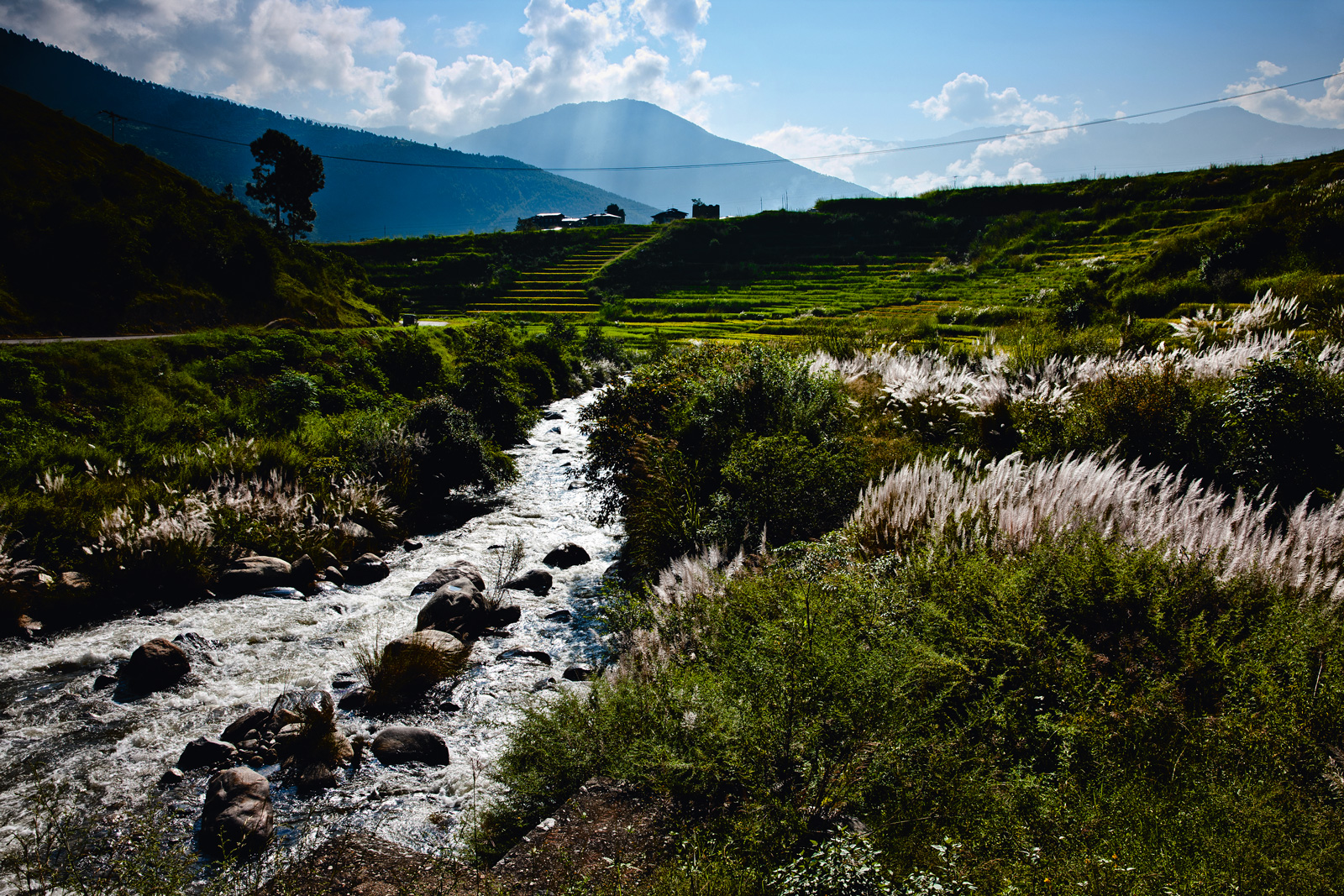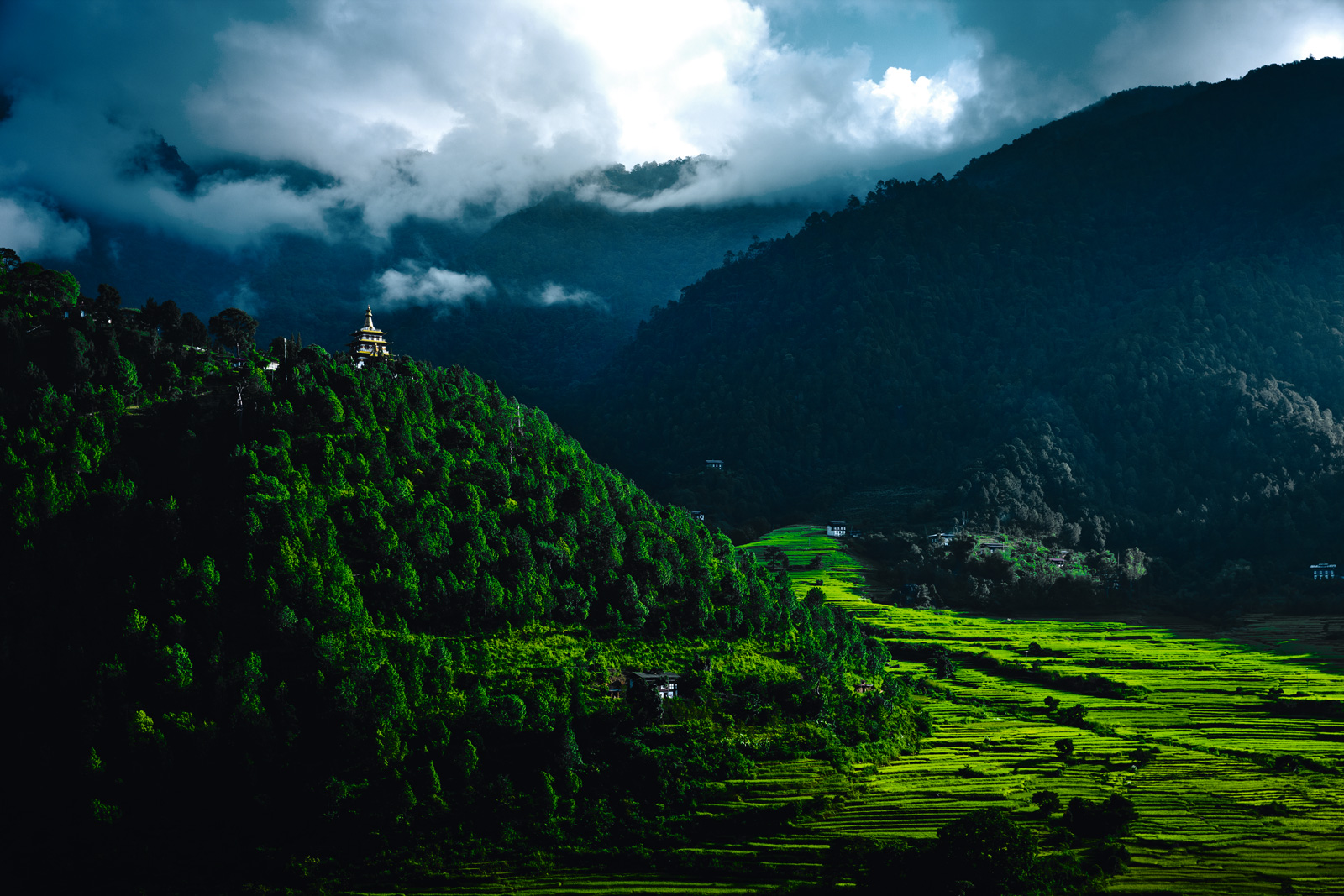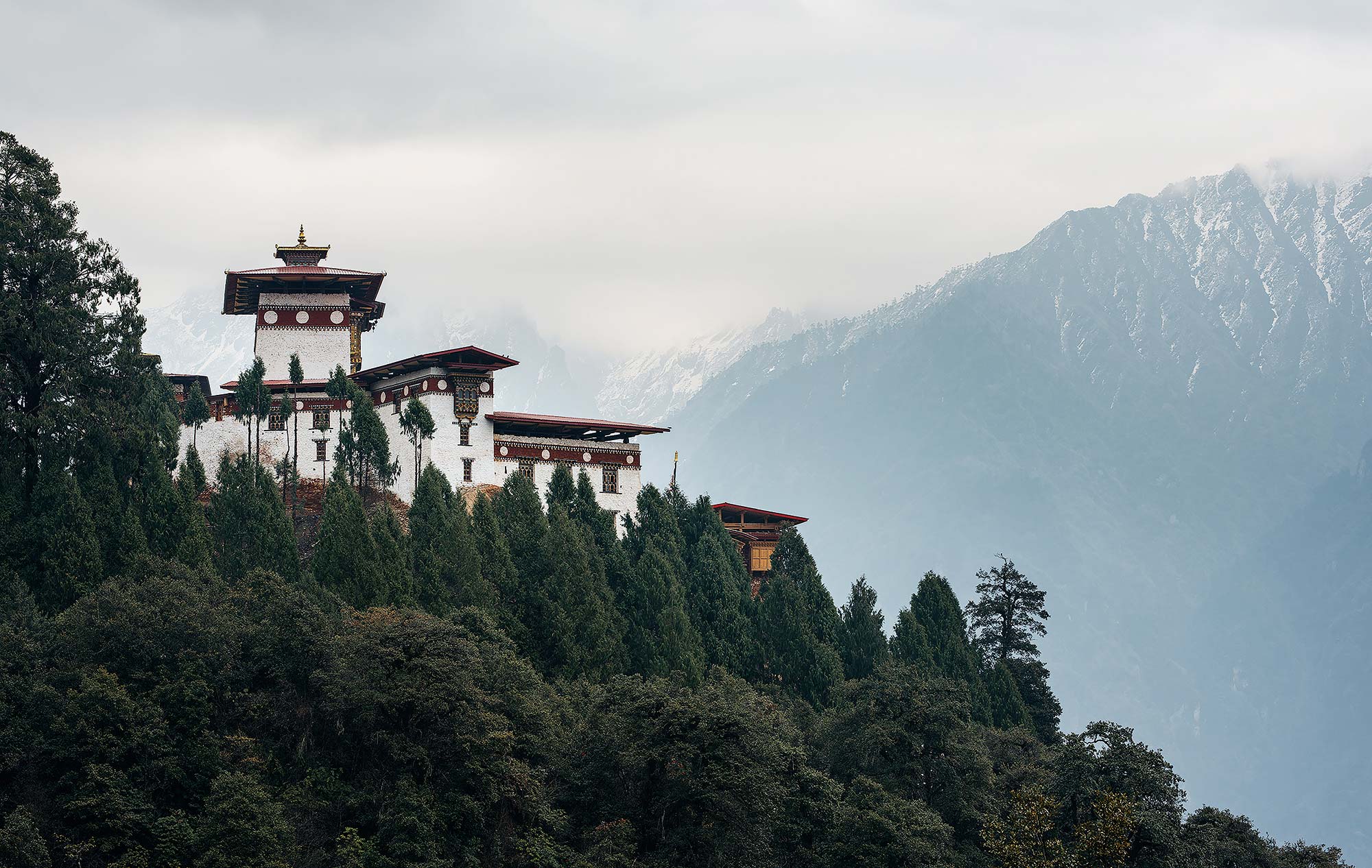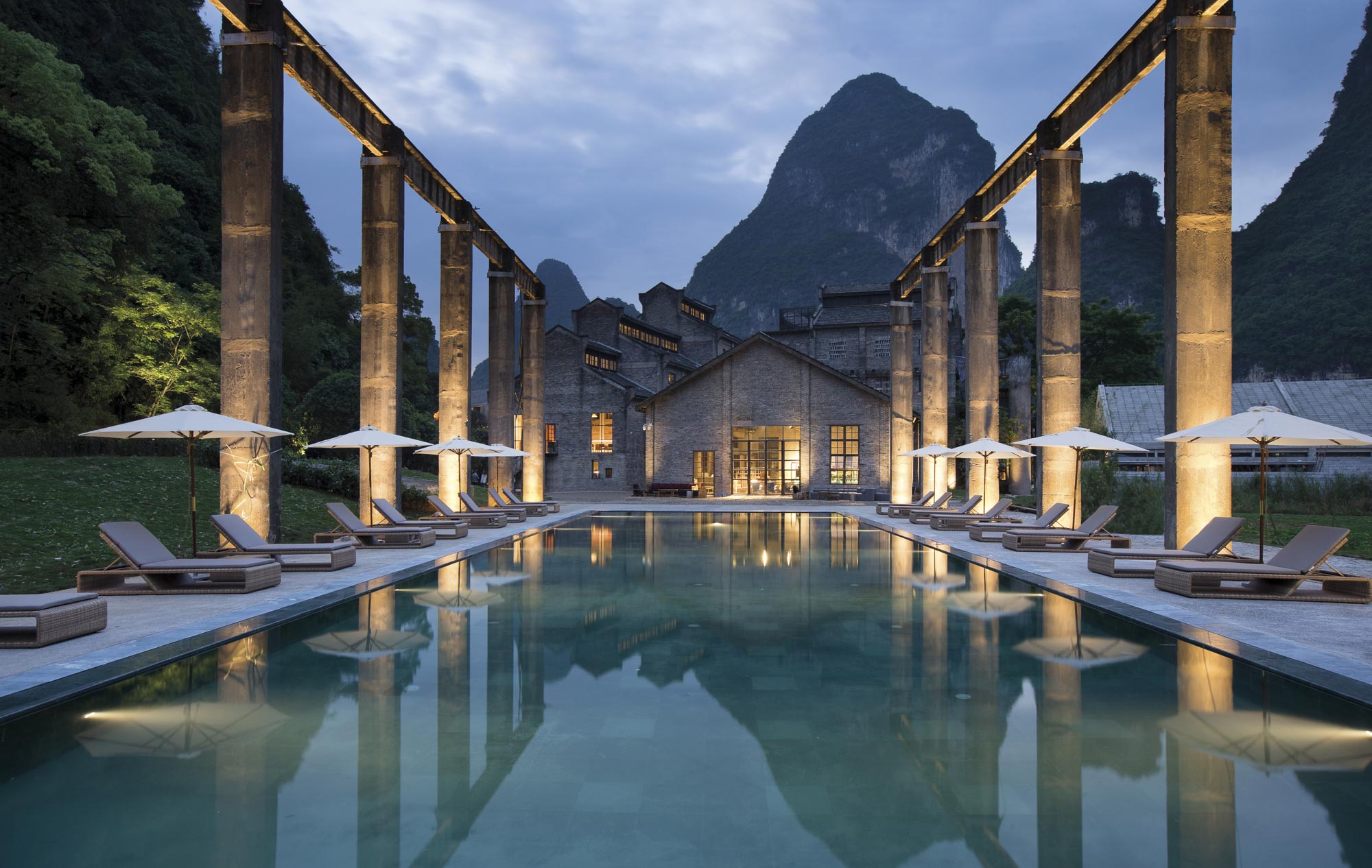As the blades whirr into life, the Royal Bhutan Helicopter Service pilot makes a final check before we gently lift away from the Punakha Valley and bank towards the snow-capped mountains in the distance.
Children watching below are held tightly by their parents as we take off. This landlocked nation between India and China only has two helicopters, so seeing one up close is a rare treat. But as Bhutan’s high-end tourism industry continues to swell with luxury hotels, it’s a sight that will become more familiar.
This flight is included in Como’s new Scenic Heli Adventure, part of a six-night exploration of the country that takes visitors from Paro to the tropical Punakha Valley, as well as a second helicopter charter to the Labatama Valley, home of the dramatic and almost inaccessible Utsho Tsho, or Turquoise Lake.
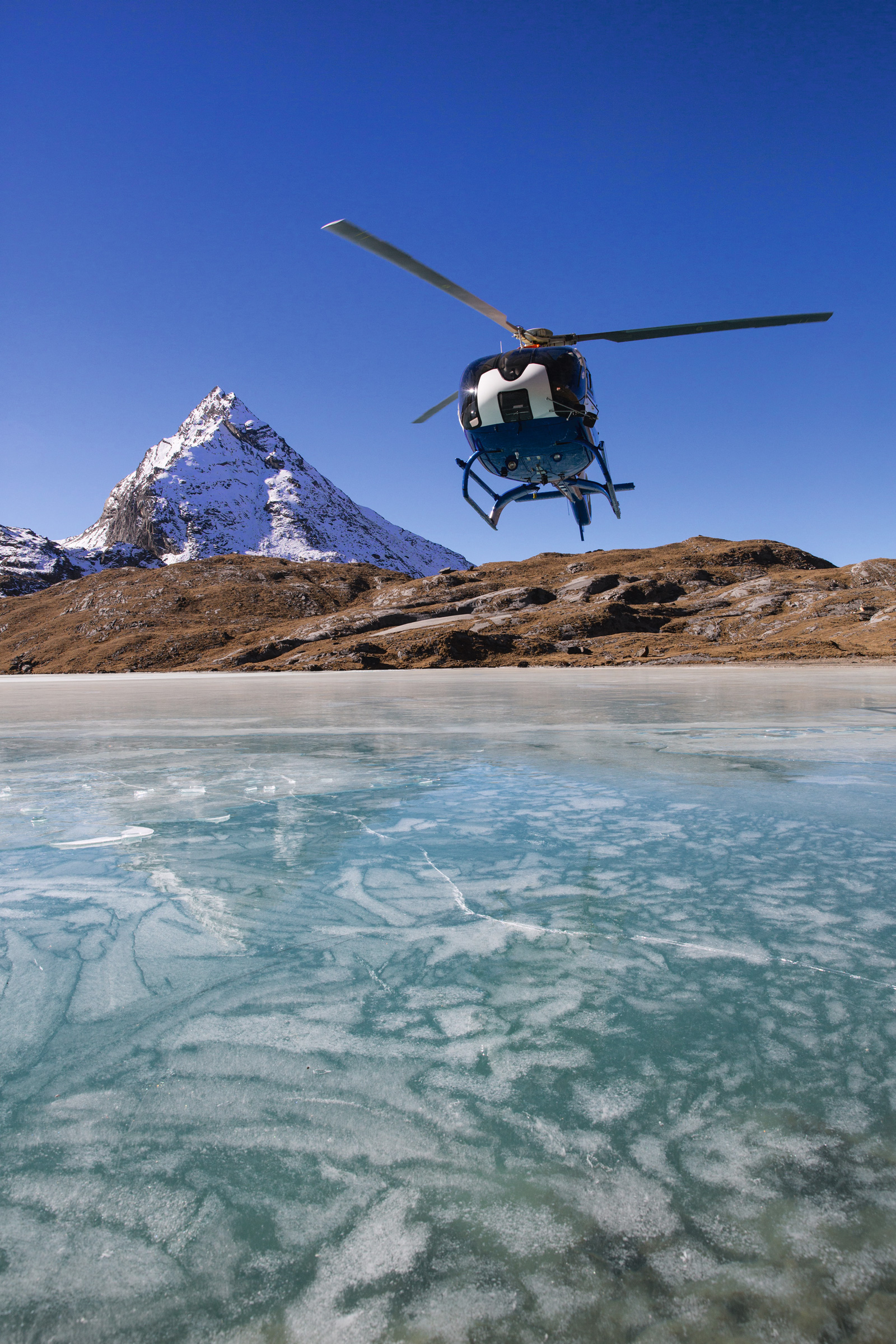
Punakha was Bhutan’s original capital and features one of the Buddhist nation’s most famous and beautiful dzong, a fortified monastery known as the Palace of Great Happiness that was built in 1638 (the country famously continues to judge itself by the Gross National Happiness index). It has hosted every coronation as well as the 2011 wedding of Bhutan’s young King Jigme to his consort Jetsun Pema – one of the world’s most photogenic royal couples who almost upstaged Britain’s Duke and Duchess of Cambridge during their visit last spring.
The inner sanctum of the monastery includes the sacred relics of monks, including one who is said to be ‘neither alive nor dead’, but in a state of meditation for almost four centuries. Don’t expect to see him: only King Jigme and the country’s head monk are allowed to look at him. My visit happened to coincide with one of the head monk’s annual visits to the Palace of Great Happiness, when thousands of Buddhist monks and nuns from all over the country congregate for a week-long festival of prayer and meditation. Many had spent weeks walking hundreds of kilometres to get there, leading some of their prized yaks with them.

A few kilometres further up the winding river valley from the palace sits the luxury lodge Como Uma Punakha, one of Como’s two Bhutan resorts, with what is surely one of Asia’s best breakfast views. Local buckwheat pancakes and fruit compote are served outside as the morning mist slowly fades over the river below, revealing rice terraces and fields with yaks pulling ploughs. Barely another building can be seen, while a vehicle passes by below maybe every 15 minutes. But if this all seems impossibly bucolic and peaceful, then it’s nothing compared to the Laya Valley, 4,000 metres up in the Eastern Himalayas, where we’re headed in the helicopter.
Soaring upwards, the only road below quickly disappears, while the only buildings are tiny clusters of huts used by nomadic herders. As we climb higher, the green carpet of pine trees gives way to sheer rock faces. In his soft Yorkshire accent, captain Nik Suddards says that we’re 30 minutes away from our destination.
Eventually a village appears below, clinging to the hillside. It’s home to the indigenous Layap people, a population of around 1,000 who are ethnically related to Tibetans and speak a dialect called Layakha. They refer to their home as Be-yul or the ‘hidden land’ of ancient myth: given that it takes at least five days to hike in or out from Punakha, it’s clear why.

In winter before the rainfall, Laya is dusty and arid, but in spring and summer the village teems with colour and life. The Layaps depend on their yaks for cheese, meat, clothing and more, while donkeys are used for transport. Women wear distinctive conical hats made from woven strips of bamboo topped with an inverted cross, along with multiple beautiful bracelets and necklaces of red and turquoise stones. They also seem to do much of the hard labour, walking up and down hills with huge slate slabs tied to their backs that are used to build shelters.
Television was only introduced to Bhutan in 1999, and telephones a few years later, but even today there are no visible signs of technology in this part of the Laya Valley. There are, however, cordyceps, the valuable if bizarre caterpillar fungi used in herbal remedies and traditional Chinese medicine. This newfound source of income will change Laya: though the Bhutanese determination to change at its own, deliberate, idiosyncratic pace should save it from rampant commercialisation.
Few experiences can match the beauty and solitude of the Laya Valley – and Bhutan in general. Paro Taktsang, the Tiger’s Nest Monastery in Paro, squat white buildings clinging to the side of a mountain, is one of them. But even there, only a small number of visitors were making their way up the steep mountain paths to reach what is arguably the country’s most recognisable site. Everyone who visits learns the myth of the guru who flew to Paro Taktsang on the back of a tiger.
Today’s gurus are more likely to be tech visionaries or holidaying management consultants; and their preferred form of transport has two blades rather than four legs. But for the obsessive traveller, Bhutan is still a place you visit for enlightenment and a journey to the land that tourism (almost) forgot.
PRICY BUT PRECIOUS?
The full-board helicopter adventure package, which involves stays at both Como Uma Paro and Como Uma Punakha, costs US$27,000 (HK$210,000) per couple. There’s no shortage of takers. While neighbouring Nepal has welcomed backpackers and travellers at all price points, since the tourism industry opened up in 1974, Bhutan has steadfastly – and successfully – sought only the high-end traveller’s dollar.
It’s a policy that was forward-thinking then, and has continued to pay dividends in recent years as wealthy global visitors look for destinations not overrun by tourists. In fact, with just over 150,000 visitors in 2015, fewer people visited The Land of the Thunder Dragon than North Korea.
The Bhutan government calls its tourism policy ‘high value, low impact’ and seeks ‘only the most discerning visitors with a deep respect for cultural values, traditions and the natural environment’. It comes at a price, in the form of a US$200 (HK$1,550) fee per person per night (in low season), where US$65 (HK$500) goes towards the country’s education, healthcare and poverty alleviation projects.
The package price covers accommodation, meals, mandatory tour guides and more – just don’t expect Como, Aman or the other luxury brands with a foothold in the country to stick to that particular price point.
That foothold is discreet. After the first hotels sprang up in hilly Paro, warmer, sub-tropical Punakha followed.
But with the properties blended into a tropical valley of poinsettia, rhododendron and cherry trees lining rice terraces that slope down towards the Mo Chu River – you’d hardly know they are there.
